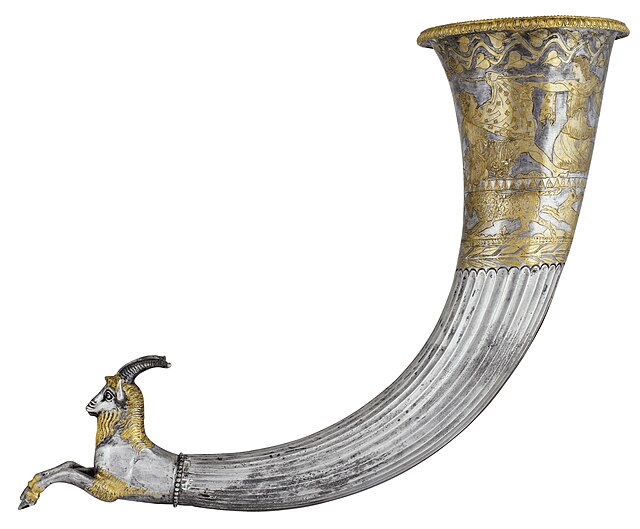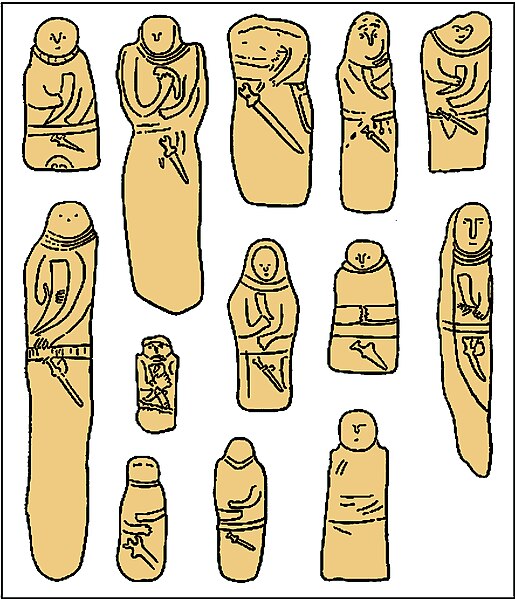A rhyton is a roughly conical container from which fluids were intended to be drunk or to be poured in some ceremony such as libation, or merely at table. A rhyton is typically formed in the shape of an animal's head. Items were produced over large areas of ancient Eurasia, especially from Persia to the Balkans. Many have an opening at the bottom through which the liquid fell; others did not, and were merely used as drinking cups, with the characteristic that they could not usually be set down on a surface without spilling their contents.
Golden rhyton from Iran's Achaemenid period, excavated at Ecbatana. At the National Museum of Iran.
Silver rhyton with goat protome and death of Orpheus, c. 420–410 BC, housed in the Vassil Bojkov Collection, Sofia, Bulgaria. The horn in a continuous and graceful curve makes a right-angled bend. Its lower two thirds are covered by flutes with arc-shaped upper tips. A figural scene below the flaring rim represents the murder of Orpheus. The musician is the central figure, fallen to his right knee, flanked by three attacking Thracian women. He holds a six-string lyre on his right hand and with his left one, wrapped in his mantle, a knobbed wooden stick, with which he tries vainly to protect himself.
A rhyton drinking vessel with animal details; such vessels were widely produced in Persia during the Achaemenid Empire (550–330 BC), though the lifelike animal details as seen in this one date from the later Parthian Empire (247 BC – AD 224).
A rhyton wine horn with lion protome, Iran, Parthian period, 1st century BC – 1st century AD, silver and gilt, housed in the Arthur M. Sackler Gallery
A drinking horn is the horn of a bovid used as a drinking vessel. Drinking horns are known from Classical Antiquity, especially the Balkans, and remained in use for ceremonial purposes throughout the Middle Ages and the Early Modern period in some parts of Europe, notably in Germanic Europe, and in the Caucasus. Drinking horns remain an important accessory in the culture of ritual toasting in Georgia in particular, where they are known by the local name of kantsi.
The Roordahuizum drinking horn, made in the mid-16th century by silversmith Albert Jacobs Canter, kept in the Frisian Museum at Leeuwarden
Drinking Horn with Silver-gilt Mounts (detail), Northern German or Scandinavian, Late 15th century, The Hunt Museum
Collection of drawings of Scythian stelae of the 6th to 5th centuries BC. Many of them depict warriors holding a drinking horn in their right hand.
The Hochdorf drinking horn (iron with sheet gold ornaments, capacity 5.5 litres)








